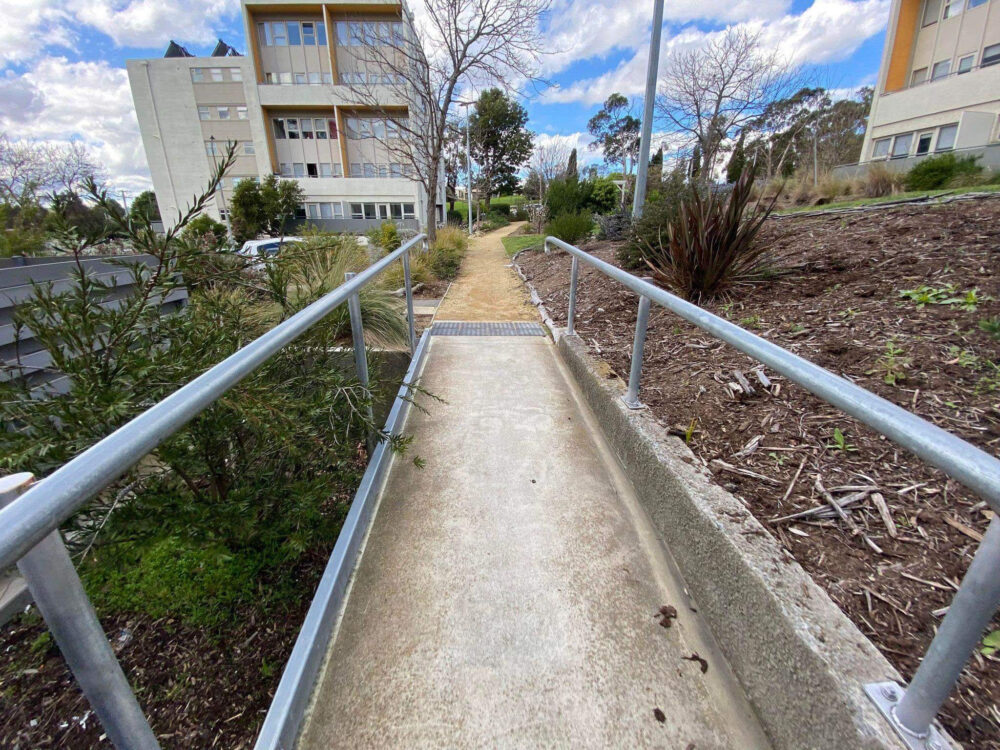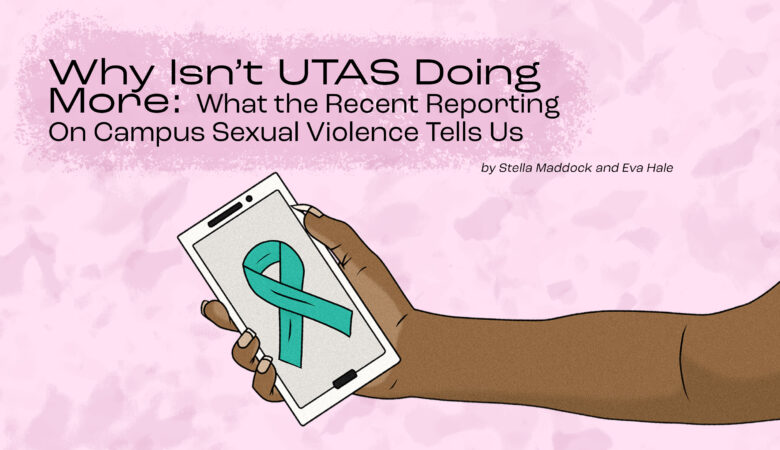The Queens Walk apartment complex, formerly known as Stainforth Court, in Nipaluna/Hobart’s northern suburbs of Cornelian Bay is the proposed site of a new 23.7 million dollar renovation. The development will provide roughly 65 new housing units in partnership with Housing Choices Tasmania, who currently oversee the site.
The roll out of a Queens Walk expansion is a part of the Rockcliff government’s wider ‘Greater Hobart Plan’ which it has been spruiking as “future-proofing” housing, transport and employment targets for the general Hobart area, which they say has an estimated populous growth of some 60,000 people in the next thirty years.
Although various groups are cautious about the new proposed Queens Walk plan and residents themselves say they feel “ignored”.
The complex which was shut and reopened in 2013 after a widely reported murder investigation in 2011 has had a tumultuous past and a bad rap in local Hobart mythology. In recent years post 2013 renovations Queens Walk has been praised for its diversity and its “state of the art” community approach to housing.
However residents at the complex have cited concerns to Togatus about a lack of community consultation and accountability from Housing Choices throughout their management of the building as well as in the process of informing residents on the proposed renovations to the site.
One resident, ‘John’, has told Togatus that conditions vary widely amongst those living in the apartments. He alleges that there has been a “notable change in management” over the years whereby Queens Walk has “slipped from its status as being new and shiny, and straight into disrepair. No longer with any funding for maintenance”.
He says there are potholes and broken lights, faulty front door locks, dilapidated pathways, flooding problems, graffiti, asbestos, mould issues, rubbish dumping, anti-social behaviour and squatters in many of the empty apartments go knowingly unaddressed by Housing Choices.
John also pointed out a continuing problem with disability access, which he says will leave him no choice but to try and seek other, unaffordable, accommodation if it continues to be unsolved due to a degenerative disability he struggles with. Among the growing list of concerns, residents have also complained that the once bustling community room that hosted tutoring, games nights and dinners now sits empty and that community gardens are not permitted to be used.
“We have these facilities that were put in to encourage the sense of community, yet there are no allocations for using them anymore” the general feeling of the community is now one of “uprising” rather than togetherness. With residents “feeling abandoned and neglected by Housing Choices” or others who John says “say nothing out of fear and undoubtedly the trauma they have experienced by authorities previously”.
He believes that while mostly accessible systems are in place for reporting maintenance, Housing Choices as they operate today often purposely ignore residents once complaints are made. He says in one instance he was told that he should fix black mould that existed before he moved in with bleach and a mop, even though the poor design of ventilation in the apartments is what creates the issue in the first place.
John has contacted the Rental Tenants Union, Housing Choices Australia, CBOS, and the City of Hobart for further help, but he says his options are minimal as he continues to be bounced around from one organisation to the other with little accountability to residents and minimal legal options to be explored.
Renovations to Queens Walk surely could not come sooner… although residents like John say they worry about the renovations too.
“Until their properties are in a liveable standard and maintaining the requirements under the law, there should not be any approvals for planning, permits, or otherwise”. Others we spoke to also pointed out the additional 500 properties in the North West that were recently been acquired by Housing Choices. They claim the additional case load will continue to see management resources and accountability processes worsened at the current Queens Walk site by nature of expansion.
“Queens Walk is already neglected and every day it is turning closer to the property it was before 2013 with regular antisocial behaviours like drinking, drug use, and large gatherings of men all occurring in the common areas and especially at night. It may not be a slum now, but chuck in 65 more apartments full of residents to neglect just 3 years after renovations and it is on the fast track” says John.
He says he worries about the small minority of those who behave anti-socially, as he believes it will worsen stigma about the area and increase discrimination that he already unduly faces.
“Outside of the social stigma, I’ve had difficulties getting taxis, Ubers, mail and package deliveries, and even groceries here. I commonly am asked about the murder that occurred in 2011.”
On top of this, John claims that he found out about this particular version of renovation plans via Facebook post from The Mercury. Later he says he received “a non-postmarked letter in his letterbox from City of Hobart, dated 1st of September (received in the afternoon on the 5th September) mentioning the plan number and a website to access it.”
There is no tangible copy of the plan on site and many of the residents are unable to access the internet and often speak languages other than English primarily at home. It leaves many unable to be accurately informed on what the proposed changes will mean for them. John asserts that many residents he knows have learning disabilities, vision problems, intellectual disabilities, and other reasons as to why “they can’t feasibly read a technical 200+ page document found online”. Calling it “unfair” that the onus has been placed on residents to investigate the changes, citing a lack of communication from Housing Choices on the matter.
Dr Kathleen Flanagan is a Lecturer in Social Problems and Policy at the University of Tasmania with a specialty in public housing. She believes “that the scale of the housing crisis is such that we need to be initially targeting our efforts at those people most in need of support and at the area of the housing system where the most strain is being felt.” She says Queens Walk fits that brief.
“Queens Walk is a well-located site, close to jobs and services, where there is ample land available for the development.”
She believes that some community calls for more ‘integrated’ models of social housing are largely founded on misconceptions about who social housing tenants are. “They are in fact pretty much like any other group of people, but have experienced greater disadvantage, marginalisation and injustice than most.
“Social housing communities in Tasmania are highly functional and often operate more like the traditional white-picket-fence idea of a community than many wealthy areas.”
She says that she “worries” about the consequences of discourse around the disadvantages of sites chosen for social housing development. “Sometimes it seems that nowhere is good enough for social housing tenants. But if nowhere is good enough for social housing tenants, then social housing tenants just end up nowhere.”
She also says that accountability in the renovation and possible relocation process during works carried out is something across the board needs to be improved upon in the public housing space. “Around Australia, tenant relocation to make way for social housing redevelopment has been very badly handled.”
“Sometimes the construction side of social housing policy gets lost in talk of ‘assets’ but we need to remember that we are talking about people and homes. We are building our base of knowledge about what constitutes ‘good’ practice in relocation, but there is often a wide gulf between that good practice and what actually happens.”
Dr Flanagan says stories like John’s are something she hears about often, especially in regards to consultation and communication in large housing projects. She says often a government’s “need to control the media narrative” is treated as “more important than the tenants’ right to know what’s happening to their homes and communities.”
“In my view tenants should be told first. if that means the news leaks and the narrative slips from government control, then so be it.”
She also agrees that “a lot of the stigma attached to places like Queens Walk or other areas known to be social housing arises from prejudice.” She notes that the things residents like John described “are frankly unacceptable discrimination.”
“Many people would say they aren’t prejudiced—it’s just because they’ve had ‘bad experiences’, but if I have a bad experience with someone in a wealthy, privileged suburb, I don’t immediately decide I will forever avoid all wealthy, privileged suburbs, so why should it operate differently when the suburb or development is disadvantaged? Why does fault lie with the individual when it’s a prestigious suburb, but with the place when it isn’t?”








